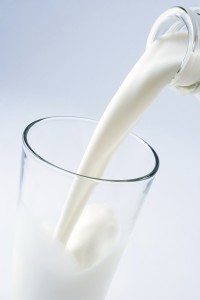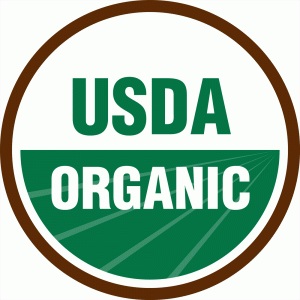Response to Op-Ed: “Five myths about organic food”
 Peter Laufer’s “Five myths about organic food” published in the June 23 Washington Post ignores many important details about organic that support the very claims he is trying to refute. Even a cursory investigation of the research and regulations supporting organic reinforce the benefits of organic agriculture.
Peter Laufer’s “Five myths about organic food” published in the June 23 Washington Post ignores many important details about organic that support the very claims he is trying to refute. Even a cursory investigation of the research and regulations supporting organic reinforce the benefits of organic agriculture.
1. If a product is labeled organic, it hasn't been exposed to herbicides or pesticides.
His attempt to debunk this statement fails to describe the rigorous preventive systems organic producers are required to implement, or recognize that organic certifiers conduct periodic residue testing for prohibited pesticides, contaminates and GMOs. Organic producers do not operate their farms in a bubble; they farm in the real world. Their crops are exposed to damage from pests, weeds, and disease, as well as the risk of contamination from neighboring conventional farms and sources of pollution. What sets organic production apart is organic producers are required to use non-toxic, integrated pest, weed, and disease prevention plans prior to considering organically approved material application. Organic producers must also mitigate risks of inadvertent pesticide drift from neighboring land through buffers or timing of plantings.
Organic producers are allowed to use a limited amount of naturally occurring pesticides when preventive practices fail to prevent damage from pests, weeds, or diseases. The limited pesticide products available to organic producers are benign and have such low toxicity levels that they are considered "exempt from tolerance" by the EPA. Additionally, these substances are reviewed every five years by the National Organic Standards Board for new information concerning their safety. Contamination of organic crops from pesticide drift, GMO drift, or other environmental factors is also taken into consideration. All certified organic operations must have measures in place to mitigate these risks, and certifiers routinely test crops based on risk to determine if these measures are effective to safeguard the integrity of the organic seal.
Non-organic substances allowed in final products labeled "organic" and "made with organic…" include such important ingredients as baking soda, dairy cultures, and yeast, necessary for the production of organic baked goods, yogurt, and bread. He fails to point out that any non-organic ingredient, such as vegetable oil used to make corn chips in a "made with organic…" product, must be verified to be non-GMO and produced without sewage sludge or irradiation. The organic labeling categories have clear requirements, based on the realities of food production that meet consumer expectations.
2. Organic food is better for you.
Any conclusions that there are no health differences between organic and conventional products ignore scientific findings. On the contrary, several studies have shown that raising animals without the use of antibiotics, as required by organic standards, can decrease consumer risk of exposure to antibiotic-resistant bacteria. One study found that bacteria on conventional poultry were more resistant to ampicillin, chloramphenicol, doxycycline, ciprofloxacin, gentamicin, and sulfisoxazole. Another study comparing resistance levels of Escherichia coli, Staphylococcus aureus, Listeria monocytogenes, and Salmonella spp. showed that in all cases where a significant difference between antibiotic resistance was found, resistance was higher in conventional as compared to organic beef. Research has also shown that multi-drug resistance is lower in organic operations than conventional operations. Researchers conducting these studies conclude that “Organic farming practices contribute to decreased dissemination of antibiotic resistance,” and “Organic livestock farming with its restrictions and additional requirements contributes to further effectiveness of antibiotics.”
Laufer also glosses over the many studies showing higher nutritional value of organic foods. Some organic crops have been found to have higher antioxidant levels than conventional crops. For example, a study published in 2013 found that organic tomatoes were 50 percent higher in vitamin C content than conventional tomatoes, and had 139 percent higher total phenolic content.
 Concerning organic milk, one recent article showed that organic milk has a better nutritional omega fatty acid profile than conventional milk, with organic milk containing 25 percent less omega-6 fatty acids and 62 percent more omega-3 fatty acids than conventional milk, yielding a 2.5-fold higher omega-6:omega-3 ratio in conventional compared to organic milk. These high levels of omega-3 fatty acids and low levels of omega-6 fatty acids are linked to preventing cardiovascular disease, cancer, and inflammatory and autoimmune diseases.
Concerning organic milk, one recent article showed that organic milk has a better nutritional omega fatty acid profile than conventional milk, with organic milk containing 25 percent less omega-6 fatty acids and 62 percent more omega-3 fatty acids than conventional milk, yielding a 2.5-fold higher omega-6:omega-3 ratio in conventional compared to organic milk. These high levels of omega-3 fatty acids and low levels of omega-6 fatty acids are linked to preventing cardiovascular disease, cancer, and inflammatory and autoimmune diseases.
3. Organic food is better for the environment.
Mounting evidence proves the environmental benefits of organic agriculture. Although crops produced far away from where they are sold might have a higher carbon footprint than locally produced crops, this is a larger food transportation problem not linked to organic per se. Research repeatedly shows organic agriculture has a far smaller carbon footprint than conventional agriculture, and can even help reverse the trend of climate change. One study found that organic farms emit around twenty percent less greenhouse gasses per yield unit than conventional farms. Other studies show organic farms are more energy efficient than conventional farms, and have a higher uptake of methane than conventional farms. A recent publication by the Rodale Institute has even found that managing soils organically can reverse some of the effects of climate change by sequestering more CO2 than is released annually.
His point that conversion of natural habitat to farmland can be harmful to the environment is not an organic issue, but an agricultural one. And any argument that foreign farm labor conditions might not be up to U.S. standards is a smokescreen. When it comes to laborer well-being organic is far superior, minimizing exposure to toxic chemicals both domestically and abroad. Moreover, organic farms actually help mitigate the negative effects of habitat loss brought on by conventional farming, as show in a study published in the journal Ecological Applications, where organic farms buffered the negative effects that habitat fragmentation has on native pollinators.
4. Products labeled organic are inspected to guarantee their purity.
 Attempts to discredit the annual inspection process to which all organic producers and processors must submit ignore the fact that organic certification is one of the most heavily regulated certification systems domestically. All certifiers must demonstrate that their inspectors are competent, qualified, and have no conflicts of interest in order to maintain accreditation from USDA. Organic inspectors and certifiers undergo rigorous and ongoing training from independent organizations such as International Organic Inspectors Association and USDA itself. All certifiers are regularly audited by USDA to ensure competency and rigor; USDA can stop a certifier from issuing organic certificates should their abilities come into question. Moreover, USDA has the authority to leverage civil penalties and conduct investigations into fraudulent activities concerning certificates. The reality: organic farmers and processors are inspected at least once per year by a competent and highly trained inspector. No other sector of the food industry is subject to the same rigorous annual review.
Attempts to discredit the annual inspection process to which all organic producers and processors must submit ignore the fact that organic certification is one of the most heavily regulated certification systems domestically. All certifiers must demonstrate that their inspectors are competent, qualified, and have no conflicts of interest in order to maintain accreditation from USDA. Organic inspectors and certifiers undergo rigorous and ongoing training from independent organizations such as International Organic Inspectors Association and USDA itself. All certifiers are regularly audited by USDA to ensure competency and rigor; USDA can stop a certifier from issuing organic certificates should their abilities come into question. Moreover, USDA has the authority to leverage civil penalties and conduct investigations into fraudulent activities concerning certificates. The reality: organic farmers and processors are inspected at least once per year by a competent and highly trained inspector. No other sector of the food industry is subject to the same rigorous annual review.
5. Imported products labeled as organic meet U.S. standards.
All food labeled as “organic” sold in the United States, regardless of origin, must be certified to USDA organic certification standards, and USDA accredits all certifiers (both domestic and foreign) to the same requirements to uphold the integrity of the organic label. USDA has revoked the accreditations of foreign certifiers who failed to demonstrate competency and quickly announces the discovery of fraudulent certificates. Despite the rare and isolated occurrences of fraud in the industry, the organic label remains the only regulated claim with federal oversight and enforcement.
The high organic standards set in place by USDA have also encouraged harmonizing organic standards across major markets. The United States currently has organic equivalency agreements with Canada, the European Union, and Japan. Such agreements promote strong organic programs, protect organic standards, enhance cooperation, and facilitate trade in organic products across regions. This mutual oversight helps ensure the value of organic for consumers.


